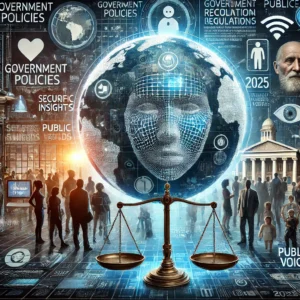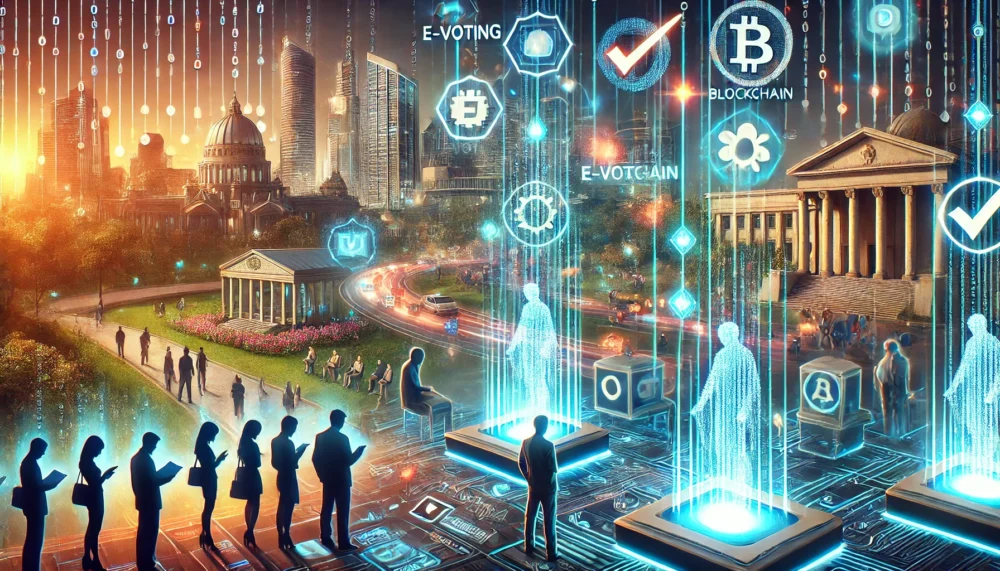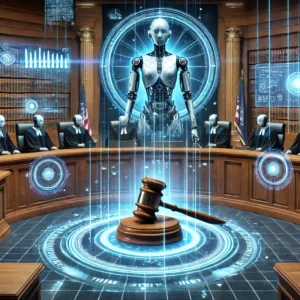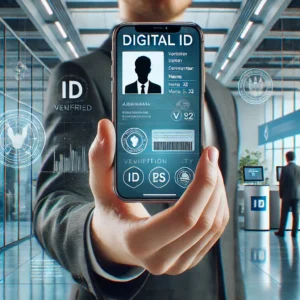
Have you ever glanced up at a security camera and wondered if it’s quietly logging every detail of your face? You’re certainly not alone. This question has stirred excitement, suspicion, and calls for regulation across global communities—especially as we ride into 2025, an era brimming with rapidly evolving tech. Facial recognition technology sits at the center of a swirling debate: Are its security benefits worth the privacy trade-offs? And how do we shape laws that find harmony between safety and personal freedoms?
In this article, we’ll explore how governments, scientists, celebrities, and everyday individuals—both old and young—are weighing in on facial recognition regulations around the world. You’ll find contradictions, controversies, and perhaps a few glimpses of hope. Let’s delve into the details.
Table of Contents
- The Global Surge in Facial Recognition
- Government Notes: Evolving Policies and Regulatory Approaches
- Political News: Tensions, Triumphs, and Tech Trials
- Research Labs & Scientist Insights: Security vs. Ethics
- Celebrities in the Spotlight: When Hollywood Meets Biometric Tech
- The Elderly Viewpoint: Cautious Yet Hopeful?
- Youth Perspectives: Tech-Savvy Advocacy or Indifference?
- Top Challenges in Implementing Regulations
- The Future Legal Landscape
- FAQs
- Conclusion & A Gentle Nudge Forward
1. The Global Surge in Facial Recognition
Let’s be honest—facial recognition is no longer a mysterious gadget you’d see only in sci-fi flicks. Cameras have popped up in airports, shopping malls, police stations, and even at large-scale entertainment events. As noted by the Center for Strategic & International Studies (CSIS), governments worldwide are leveraging biometric systems to expedite security checks and law enforcement.
But there’s a flip side: The more advanced this technology becomes, the more data it collects. And with data, especially personal data, come swirling concerns about consent, surveillance, and possible misuse. Sure, an accurate facial recognition system can help identify a lost child in a crowded city square, but it could also track peaceful protesters with unsettling precision. This dual nature continues to spark the question: How do we strike a balance?
(Alt Text for Image: “Security camera with a facial recognition overlay analyzing human faces in a busy airport.”)
2. Government Notes: Evolving Policies and Regulatory Approaches
Governments across continents have been drafting, revising, and sometimes scrapping policies on facial recognition. Legislation in some regions is strict; in others, it’s still in its infancy.
- European Union: Known for its robust data protection framework through the GDPR (General Data Protection Regulation), the EU has turned its gaze toward facial recognition. New proposals aim to restrict real-time facial recognition in public, insisting that law enforcement use it only for serious criminal investigations.
- United States: Regulations vary wildly from state to state. For instance, some municipalities have outright banned police use of facial recognition. Elsewhere, it’s considered an essential tool for security. Federal-level laws remain hotly debated, with bills tabled to limit how federal agencies employ this technology.
- Asia and Beyond: Countries such as China have heavily deployed facial recognition for daily tasks—train station check-ins, security verifications, and more. Meanwhile, smaller nations might have minimal oversight or rely on external frameworks to guide them.
According to an IEEE Public Safety and Ethical Considerations Report, the question is less about “if” governments should use facial recognition and more about “how.” Ethical frameworks, it suggests, should be woven into every stage—design, implementation, and governance.
3. Political News: Tensions, Triumphs, and Tech Trials
When it comes to politics, few technological issues are as divisive as facial recognition regulations. We’ve seen heated debates about whether a country should halt progress for privacy’s sake or push forward for security benefits.
- Champions of Security: Some politicians emphasize that surveillance technology can deter crime. They cite decreased theft in certain neighborhoods after cameras—linked to face-recognition software—went live. They also note how data can help find missing individuals faster.
- Privacy Advocates: Others caution that we could inadvertently create an all-knowing government apparatus. They reference scenarios in which law enforcement (or even malicious hackers) might abuse facial data. In mid-2025, a high-profile congressional hearing in the U.S. saw a senator exclaim, “We cannot sacrifice civil liberties on the altar of convenience.”
- International Politics: Nations sometimes clash over data-sharing policies. When footage from one country’s cameras is exchanged with intelligence agencies in another, who holds accountability? This question has fueled new treaties, along with fierce rejections of cross-border cooperation in facial recognition.
Many political leaders propose a middle ground, like strict limits on the sorts of crimes or investigations that justify using face scans. But the legislative landscape remains complicated, especially with global bodies struggling to define universal guidelines.
4. Research Labs & Scientist Insights: Security vs. Ethics
Behind the scenes, in labs that smell faintly of coffee and electronics, research scientists are deep in the trenches. They refine algorithms for better accuracy—less misidentification, less bias. According to a facial recognition briefing by GSX, scientists often face a moral conundrum: They believe in the technology’s potential but worry about who might exploit it.
- Bias in AI: One major concern is algorithmic bias, where systems misidentify individuals from certain ethnic groups. This can lead to unjust arrests or mislabeling. Hence, many researchers are calling for better data sets that represent diverse populations.
- Privacy-First Solutions: Tech experts are also experimenting with “privacy-preserving” facial recognition. This includes cryptographic techniques that encrypt faceprints so that identities remain safe from prying eyes.
- Open-Source Collaboration: Some labs share their code openly, hoping others can spot flaws or propose improvements. This transparency fosters trust, though critics retort that open sourcing might also give hackers a blueprint to manipulate the technology.
A recent study (published in an NCBI article) highlights how machine learning models are becoming adept at distinguishing “real” human faces from deepfakes, which can circumvent classic face-matchers. Scientists see this as a much-needed line of defense in a world where digital illusions can fool the best of us.
5. Celebrities in the Spotlight: When Hollywood Meets Biometric Tech
If there’s one group that can amplify debates faster than a political scandal, it’s celebrities. Across social platforms and red-carpet interviews, stars have voiced strong opinions on biometric technology.
- Celeb Endorsements: A renowned film star recently posted on her social media that she felt more secure knowing that a facial recognition camera can deter violent stalkers. She said it’s “a real blessing for personal security.”
- Criticisms: Another high-profile musician blasted the technology, sharing that constant surveillance “erodes the essence of creativity,” as people might feel pressured to censor themselves publicly.
- Balancing Act: Some celebrities, especially those targeted by paparazzi, seem to embrace facial recognition in restricted settings—like private neighborhoods or exclusive events—while urging caution in broader, public contexts.
Sure, this might look like typical Hollywood melodrama. But celebrity commentary often trickles down to fans, fueling mainstream awareness and mobilizing calls for or against strict regulations.
6. The Elderly Viewpoint: Cautious Yet Hopeful?
Picture a grandmother who remembers a time when rotary phones were a big deal. Then imagine telling her that a camera might scan her face at the local grocery store. Reactions can be a mix of bafflement, intrigue, or outright fear.
- Skeptical Stance: Many older adults voice reservations. They worry about losing control over personal information, especially after witnessing data breaches.
- Potential Benefits: A few, however, appreciate the possibility of safety improvements—like identifying missing persons with dementia or quickly verifying the identity of a caretaker.
- Digital Divide: Seniors sometimes struggle with how to “opt-out.” They may not fully grasp whether they have the right to refuse a face scan, or how to file complaints if they suspect misuse.
On a more personal note, an older family friend once joked to me, “If they can make a camera that erases my wrinkles, sign me up!” That humor might reflect an attempt to cope with rapid societal change. As policies evolve, it’s crucial that seniors are not left behind in the conversation.
7. Youth Perspectives: Tech-Savvy Advocacy or Indifference?
Young people grew up with phone cameras, social media filters, and ever-advancing technology. For them, scanning a face might feel as routine as scanning a QR code to buy coffee. Yet opinions still diverge.
- Pro-Tech Youth: Many see facial recognition as a natural extension of progress—quick airport check-ins, streamlined payments, or cool smartphone features. They trust they can manage privacy settings.
- Cautiously Curious: Some members of Gen Z champion rigorous data protection rules. They recall data scandals at major social platforms and worry about government agencies employing similar tactics.
- Social Justice Angle: Student groups occasionally protest the use of facial recognition on campuses, citing concerns that it could be weaponized against marginalized communities or activists.
One teenage activist told a local news station, “Technology is unstoppable, but how we handle it is up to us,” capturing that blend of acceptance and demand for accountability.
8. Top Challenges in Implementing Regulations
The road from conversation to codified law can be winding and full of pot-holes—some are trivial, some are terrifying. Let’s list a few major hurdles:
- Defining Misuse: Not everyone agrees on what constitutes “misuse” of facial data. Is it scanning a crowd at a festival? Tagging unsuspecting people in social media pictures? The vague boundaries make legal definitions tricky.
- International Harmonization: A traveler crossing different borders might be subject to drastically different rules. Achieving global standards is a monstrous task, especially when countries like China emphasize broad usage while others restrict it severely.
- Technological Evolution: Face-recognition software changes faster than legislation can keep up. Regulators sometimes struggle to update laws in time to address new capabilities.
- Data Storage and Retention: Even if scanning is legal, how long can authorities or companies keep biometric data? And where do they store it securely?
- Public Awareness: If people aren’t aware of their rights or the technology’s implications, regulations lose their potency.
The Forbes article on privacy concerns around facial recognition underscores how ignorance can be exploited. Clear guidelines and user education become pivotal in bridging the knowledge gap.
9. The Future Legal Landscape
By 2025, many experts predict we’ll see a patchwork of rules that either permit or heavily restrict the use of facial recognition. Some countries might have robust oversight bodies, similar to data protection authorities, auditing every camera installation. Others, less so.
9.1 Emerging Trends
- Compliance by Design: Tech developers might be forced to incorporate privacy features from the start—limiting data collection, anonymizing images, and providing clear user opt-outs.
- AI Accountability Boards: We could see specialized commissions tasked with analyzing algorithmic fairness, especially in police deployments. These boards might halt or approve facial recognition systems after reviewing potential biases.
- Blockchain for Data Security: Yes, it sounds like the perfect buzzword. Still, some are experimenting with blockchain-based solutions to store facial data in decentralized formats, making it harder for a single entity to hoard the entire dataset.
9.2 Government Briefs and White Papers
In the push for standardizing global regulations, government agencies release frequent briefs, proposals, and calls for public comment. The CSIS review highlights the importance of clarity: if lawmakers aren’t direct, companies exploit loopholes, and the public remains confused about what’s legal or not.
10. FAQs
Q1: Are facial recognition systems always accurate?
They’ve improved drastically but still make mistakes. Bias and false positives can be problematic, particularly for certain ethnicities. Continuous training and better data sets can reduce errors, but absolute accuracy remains elusive.
Q2: How do I know if I’m being scanned by a facial recognition camera?
In many places, you might not. Some regions require signage indicating surveillance is active, while others have no such requirement. Staying informed about local laws is the best way to discover your rights.
Q3: Can I opt out of facial recognition in public spaces?
Opt-out rules vary. Some areas allow individuals to request data deletion after they’ve been scanned, but practical processes can be complicated. If you’re unsure, reach out to local data protection authorities for guidance.
Q4: What are “ethical use” principles for facial recognition?
They generally include transparency, informed consent, data minimization, and accountability. Think of them as guidelines ensuring technology serves the public good without trampling on rights.
Q5: Could facial recognition become mandatory for regular things like banking?
Possibly. Certain industries, particularly financial services, are integrating facial biometrics for authentication. Whether it becomes mandatory depends on future regulations and consumer acceptance.
11. Conclusion & A Gentle Nudge Forward
Living in 2025 means straddling the line between innovation and apprehension. We relish how facial recognition might make daily life easier—faster check-ins, better security—but we also grapple with the fear of overshadowing privacy and autonomy. From government halls and research labs to celebrity Instagram feeds and grandparents’ living rooms, the conversation is loud, lively, and sometimes littered with contradictions.
But that’s healthy. Big transformations thrive on diverse voices. If you’re an enthusiastic supporter, challenge yourself to understand the concerns. If you’re wary, keep an open mind to the positive possibilities. And if you’re somewhere in between—well, that might be the best place to be, watching the horizon and nudging the global community toward thoughtful, balanced facial recognition regulations.
Call to Action:
- Share your experiences with biometric scans in the comments below.
- Visit authoritative sources like the IEEE’s Public Safety website or the CSIS Legislative Landscape Analysis for more insights.




